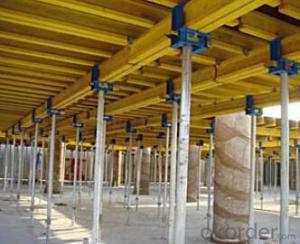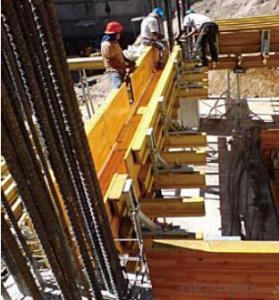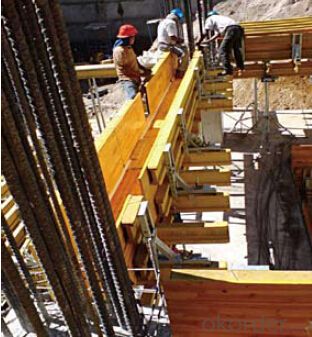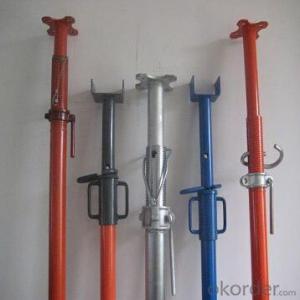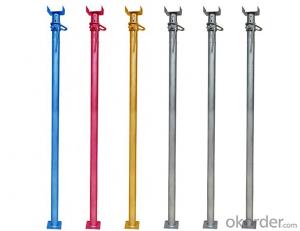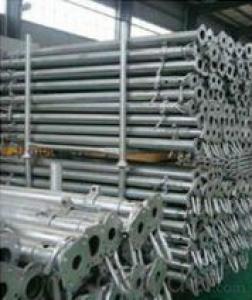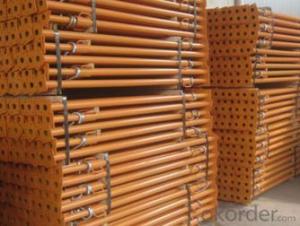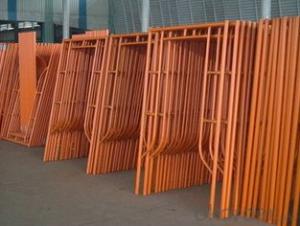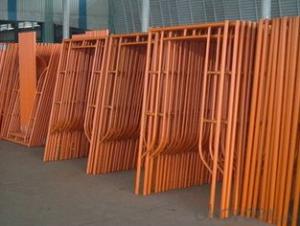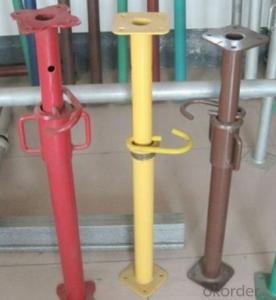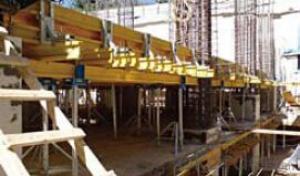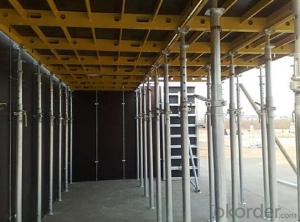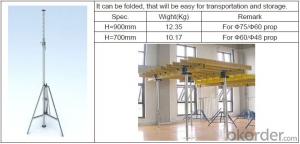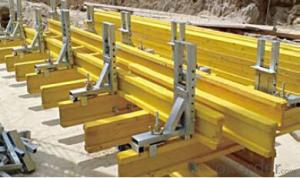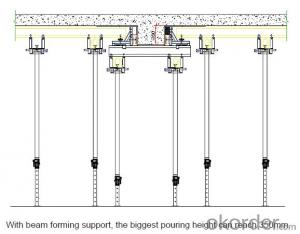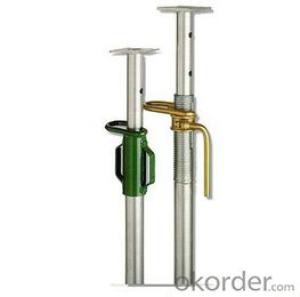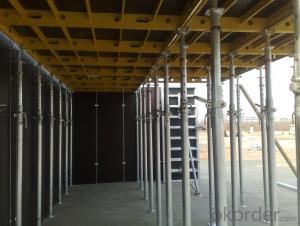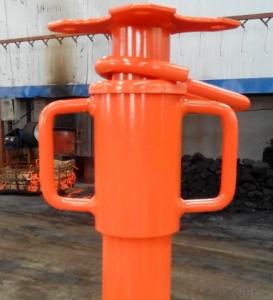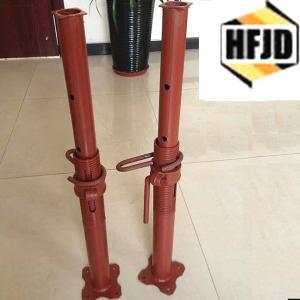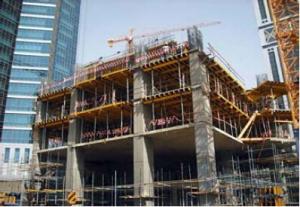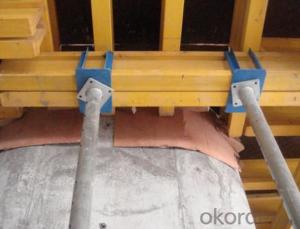Steel Prop & Tripod & Beam Clamp formwork and scaffolding system
- Loading Port:
- Tianjin
- Payment Terms:
- TT OR LC
- Min Order Qty:
- 50 m²
- Supply Capability:
- 1000 m²/month
OKorder Service Pledge
OKorder Financial Service
You Might Also Like
Steel Prop & Tripod & Beam Clamp:
(1) Steel prop is a vertical support system widely used in construction.
Characteristics:
◆ Simple & flexible structure
◆ Easy & fast operation
◆ Economical efficiency
◆ Easy storage and transportation
◆ Reasonable load-bearing capacity
(2) Tripod is always used as support for steel prop.
(3) The beam clamp is a technical instrument for supporting beam formwork
which makes conventional beam formwork simple, and increases the construction
efficiency.
Characteristics:
◆ Flexible structure
◆ Optimum design proposal
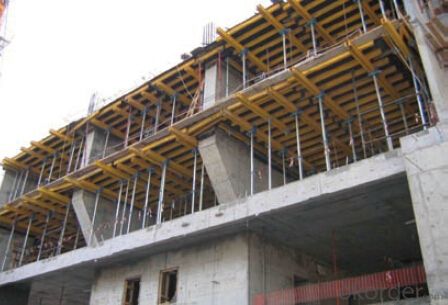

- Q: Can steel props be used for temporary support in oil storage tank construction?
- Yes, steel props can be used for temporary support in oil storage tank construction. Steel props provide strong and reliable support during construction, ensuring the stability and safety of the tank structure.
- Q: What are the load-bearing capacities of steel props at different heights?
- The load-bearing capacities of steel props vary depending on their height. Generally, steel props have higher load-bearing capacities at lower heights due to their inherent structural strength. However, it is important to consult the manufacturer's specifications or engineering guidelines to determine the specific load-bearing capacities at different heights for a particular type and model of steel props.
- Q: What are the limitations of using steel props?
- There are several limitations associated with using steel props in construction and temporary support systems. 1. Weight and handling: Steel props can be heavy and difficult to transport, especially when working on higher levels of a building or in confined spaces. The weight can also make them challenging to manipulate and adjust during installation and removal. 2. Limited adjustability: While steel props offer some adjustability, their range may not be sufficient for all applications. Adjusting the height of steel props can be time-consuming and may require additional tools or equipment. 3. Load capacity: Steel props have a limited load-bearing capacity. Depending on the specific type and size of the prop, they may not be able to support heavy loads or withstand excessive forces. This limitation can restrict their use in certain construction projects, especially those requiring extensive structural support. 4. Corrosion: Steel props are prone to corrosion when exposed to moisture, chemicals, or harsh environmental conditions. If not properly maintained or protected, this corrosion can weaken the props over time, reducing their overall strength and stability. 5. Limited structural versatility: Steel props are primarily designed for vertical support and may not be suitable for certain structural configurations or unconventional building layouts. They may not provide adequate stability or alignment in non-standard situations, requiring alternative support systems to be used. 6. Cost: Steel props can be expensive to purchase or rent, especially for long-term projects or when a large number of props are required. The cost of transportation, storage, and maintenance should also be considered when using steel props. 7. Safety concerns: Steel props require proper installation and regular inspections to ensure they are secure and stable. Failure to do so can result in accidents, injuries, or structural damages. Additionally, steel props can pose a tripping hazard if not properly positioned or secured. It is important to carefully assess the specific requirements of a project and consider alternative support systems when necessary to overcome the limitations of using steel props.
- Q: How do you protect steel props from extreme weather conditions?
- To protect steel props from extreme weather conditions, it is essential to apply a protective coating or paint on the surface of the steel. This coating acts as a barrier, preventing direct contact between the steel and the elements. Additionally, regular maintenance and inspections should be conducted to identify any signs of corrosion or damage, allowing for prompt repairs and ensuring the ongoing protection of the steel props.
- Q: Can steel props be used in the construction of residential buildings?
- Yes, steel props can be used in the construction of residential buildings. Steel props provide temporary support during construction and can be adjusted to suit the specific requirements of the project. They are commonly used for supporting beams, walls, and slabs, ensuring stability and safety during the construction process.
- Q: Why subway steel erection erection to the design elevation of 800
- First -0.4m; -4.3 m; third -7.8m; -11.0 m; fifth -14.2 M.
- Q: How do you ensure proper stability when using steel props on uneven terrain?
- When using steel props on uneven terrain, there are a few steps you can take to ensure proper stability: 1. Assess the terrain: Before setting up the steel props, carefully assess the uneven terrain to identify any potential hazards or obstacles. This will help you plan the placement of the props and anticipate any challenges. 2. Choose the right size and type of props: Make sure to select steel props that are suitable for the weight and load-bearing requirements of the structure you are supporting. Ensure that the props are adjustable in height and have a wide base for stability. 3. Level the props: Start by placing the props on the most even ground available in the area. Use a spirit level to ensure that the props are perfectly vertical and adjust their height accordingly. This will help distribute the weight evenly and prevent any leaning or tilting. 4. Secure the props: To enhance stability, use adjustable base plates or sole plates at the bottom of the props. These plates will provide a larger surface area for weight distribution and prevent the props from sinking into the soil. Additionally, consider using stakes or anchors to secure the props to the ground, especially if the terrain is particularly uneven or prone to movement. 5. Regularly check and adjust: Uneven terrain can shift or settle over time, potentially affecting the stability of the steel props. It is essential to regularly inspect the props, especially after heavy rain or ground movement. If any adjustments are needed, ensure that the props are securely positioned and level to maintain stability. By following these steps, you can help ensure proper stability when using steel props on uneven terrain, minimizing the risk of accidents or structural failures. However, it is always recommended to consult with professionals or engineers experienced in working with steel props for specific guidance and safety measures.
- Q: How do steel props contribute to the overall stability of a structure?
- Steel props contribute to the overall stability of a structure by providing temporary support and bracing during construction or renovation. These adjustable steel supports are strategically placed to bear the load of the structure, preventing any potential collapse or deformation. By distributing the weight evenly and transferring it to the ground, steel props help maintain the structural integrity and ensure the safety of workers and the building itself.
- Q: Are steel props suitable for supporting formwork?
- Formwork can be effectively supported by steel props. These props, also known as adjustable steel props or scaffolding props, are extensively utilized in construction ventures for formwork support. Their primary function is to provide temporary support and stability during the concrete pouring and curing stages. The utilization of steel props for formwork support is preferred due to their robustness, longevity, and adjustability. Constructed from top-grade steel, they possess the capability to withstand substantial loads and pressures. Moreover, the height of steel props can be easily adjusted, allowing for flexibility in formwork installation. The adjustability feature of steel props proves particularly advantageous when faced with uneven or sloping surfaces. By effortlessly extending or shortening the props, a level and stable support system for the formwork can be achieved. Furthermore, steel props offer a secure and safe solution for formwork support. Their sturdy construction, coupled with locking mechanisms, guarantees protection against unexpected collapses or movement. As a result, both the well-being of workers and the structural integrity of the formwork are upheld. To summarize, steel props are an ideal choice for supporting formwork due to their strength, durability, adjustability, and safety features. Their widespread usage in construction projects speaks to their ability to provide temporary support and stability throughout the concrete pouring process.
- Q: Are steel props suitable for supporting temporary signage or billboards?
- Yes, steel props are suitable for supporting temporary signage or billboards. Steel props offer sturdy support and durability, making them ideal for holding up heavy or large temporary signage or billboards. Additionally, steel props can be adjusted to various heights and securely anchored into the ground, ensuring stability and safety for the signage or billboard.
Send your message to us
Steel Prop & Tripod & Beam Clamp formwork and scaffolding system
- Loading Port:
- Tianjin
- Payment Terms:
- TT OR LC
- Min Order Qty:
- 50 m²
- Supply Capability:
- 1000 m²/month
OKorder Service Pledge
OKorder Financial Service
Similar products
Hot products
Hot Searches
Related keywords
